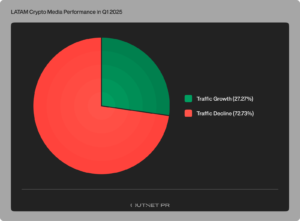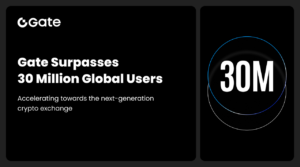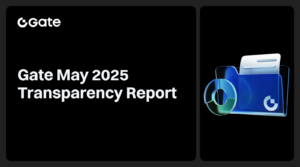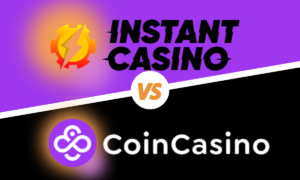
The Role of Voting Mechanisms in Ethereum-based Governance
In the realm of decentralized finance (DeFi), Ethereum has emerged as a leading blockchain platform. Apart from its robust smart contract capabilities, Ethereum also enables decentralized governance, allowing participants to have a say in the decision-making process. Voting mechanisms play a pivotal role in Ethereum-based governance, ensuring transparency, accountability, and community consensus. This article delves into the significance of voting mechanisms in Ethereum-based governance and explores their various types and applications.
Introduction
Ethereum-based governance is a fundamental component of decentralized systems. It enables token holders and stakeholders to participate in decision-making processes and collectively shape the direction of a blockchain protocol or decentralized application (dApp). Voting mechanisms within Ethereum-based governance serve as the primary means to achieve consensus and ensure fair representation. These mechanisms play a crucial role in maintaining the integrity, transparency, and security of the governance process.
Understanding Ethereum-based Governance
What is Ethereum-based governance?
Ethereum-based governance refers to the decision-making processes employed within the Ethereum blockchain ecosystem. It allows token holders and stakeholders to propose, debate, and vote on changes to the protocol or dApp parameters. This participatory approach empowers the community and ensures that decisions are made collectively, rather than relying on a centralized authority.
Why is governance important in decentralized systems?
Governance is vital in decentralized systems to avoid centralization of power and promote a fair and inclusive environment. It enables stakeholders to have a voice in determining the platform’s rules, parameters, and future upgrades. Ethereum-based governance aims to strike a balance between preserving decentralization and maintaining efficiency, while also fostering innovation and consensus.
The Need for Voting Mechanisms
Ensuring stakeholder participation
Voting mechanisms facilitate stakeholder participation in Ethereum-based governance. By allowing token holders to vote on proposals, they encourage engagement and ensure that decisions are reflective of the community’s sentiment. This inclusive approach fosters a sense of ownership and responsibility among participants.
Achieving consensus
Consensus is a vital aspect of Ethereum-based governance. Voting mechanisms provide a structured process through which consensus can be reached. By aggregating the preferences and opinions of token holders, voting mechanisms enable the community to make informed decisions that align with the majority’s interests.
Mitigating the influence of central authorities
Decentralization is a core principle of Ethereum. Voting mechanisms act as a safeguard against undue influence by central authorities or concentrated token holders. They distribute decision-making power across a diverse range of stakeholders, reducing the risk of monopolistic control and ensuring a more democratic governance system.
Types of Voting Mechanisms in Ethereum-based Governance
Voting mechanisms in Ethereum-based governance can be broadly categorized into on-chain voting, off-chain voting, and liquid democracy.
- On-chain voting
On-chain voting mechanisms directly integrate the voting process into the blockchain itself. They leverage smart contracts to record and execute voting decisions. On-chain voting ensures transparency, immutability, and verifiability.
- Off-chain voting
Off-chain voting mechanisms take the voting process off the blockchain, utilizing external systems or platforms. While they provide flexibility and scalability, they require trust in the selected off-chain infrastructure.
- Liquid democracy
Liquid democracy combines elements of both on-chain and off-chain voting. It allows token holders to delegate their voting power to trusted individuals or entities, who can then vote on their behalf. This flexible approach allows for efficient decision-making while still preserving individual participation.
On-Chain Voting Mechanisms
Token-weighted voting
Token-weighted voting assigns voting power based on the number of tokens held by each participant. This mechanism ensures that participants with a larger stake have a greater influence over the decision-making process. However, it can also lead to potential centralization if a small number of token holders control a significant portion of the tokens.
Quadratic voting
Quadratic voting assigns voting power based on the square root of the number of tokens held. This mechanism aims to promote more equal representation and prevent the dominance of a few large token holders. Quadratic voting incentivizes wider participation and avoids the concentration of power.
Binary voting
Binary voting, also known as simple majority voting, allows participants to vote for or against a proposal. This straightforward mechanism determines the outcome based on a simple majority, making it a widely used method in Ethereum-based governance.
Off-Chain Voting Mechanisms
Futarchy
Futarchy combines prediction markets with decision-making. Participants vote on the outcome they believe will have the most positive impact, and a prediction market determines the most likely outcome. Futarchy incentivizes participants to vote based on the expected success of proposals.
Approval voting
Approval voting allows participants to vote for multiple options simultaneously. The option with the highest number of approvals wins. This mechanism provides flexibility and allows participants to express their preferences more accurately.
Ranked choice voting
Ranked choice voting enables participants to rank the available options in order of preference. The mechanism eliminates options with the fewest votes and redistributes their votes until a winning option emerges. Ranked choice voting encourages participants to express their nuanced preferences and avoids wasted votes.
Liquid Democracy
What is liquid democracy?
Liquid democracy combines direct voting and delegation. It allows token holders to delegate their voting power to trusted individuals or entities, who can then vote on their behalf. This system provides flexibility, as token holders can change their delegation at any time.
How does liquid democracy work in Ethereum-based governance?
In Ethereum-based governance, token holders can delegate their voting power to individuals or smart contracts. Delegates can accumulate voting power from multiple token holders, giving them a larger influence in the decision-making process. This approach ensures that votes are cast by informed individuals while still allowing for broad participation.
Benefits and challenges of liquid democracy
Liquid democracy offers benefits such as efficient decision-making, increased voter participation, and adaptability. However, it also presents challenges, such as the risk of token holders delegating their voting power to untrustworthy delegates or the potential for power consolidation among influential delegates.
The Importance of Transparency and Security
Transparency in voting
Transparency is crucial in Ethereum-based governance to maintain the integrity of the voting process. By leveraging blockchain technology, voting mechanisms can provide transparent and auditable records of votes, ensuring that the results are tamper-proof and publicly accessible.
Ensuring security and preventing manipulation
Security is paramount in voting mechanisms to prevent manipulation or fraudulent activities. Robust cryptographic techniques and consensus algorithms employed in Ethereum-based governance ensure the security of votes, protecting the integrity of the governance process.

Case Studies: Successful Implementations
MakerDAO’s voting mechanism
MakerDAO, a decentralized lending protocol, utilizes on-chain voting to govern its platform. Token holders can vote on proposals such as collateral types, stability fees, and system upgrades. This voting mechanism ensures community participation and consensus in shaping the protocol’s parameters.
Compound’s governance system
Compound, a decentralized lending and borrowing platform, employs token-weighted voting for its governance system. Token holders can propose and vote on changes to the platform’s governance parameters, such as interest rates and asset listings. The voting mechanism ensures that the most significant stakeholders have a substantial say in decision-making.
Uniswap’s decentralized governance
Uniswap, a leading decentralized exchange, has implemented off-chain voting through its decentralized autonomous organization (DAO). Token holders can participate in the voting process by submitting proposals and utilizing their voting power. Uniswap’s governance mechanism enables efficient decision-making and community involvement.
Challenges and Future Directions
- Voter apathy and low participation
One of the challenges in Ethereum-based governance is encouraging widespread participation. Many token holders may choose not to engage in the voting process, leading to low turnout and potential centralization of power. Future improvements in user experience and education may help overcome these challenges.
- Ensuring inclusivity and avoiding plutocracy
Ethereum-based governance should strive to be inclusive and avoid scenarios where a few large token holders dominate decision-making. Developing mechanisms that promote broad participation and prevent concentration of power will be crucial for ensuring a fair and equitable governance system.
- Scalability and efficiency considerations
As Ethereum continues to grow, scalability and efficiency become important considerations for voting mechanisms. The ability to process a large number of votes quickly and cost-effectively will be vital for maintaining the effectiveness of Ethereum-based governance.
Conclusion
Voting mechanisms are indispensable in Ethereum-based governance, enabling stakeholders to actively participate in decision-making and shaping the future of decentralized systems. Whether through on-chain, off-chain, or liquid democracy approaches, these mechanisms ensure transparency, consensus, and accountability. By overcoming challenges and embracing innovation, Ethereum-based governance can continue to evolve and foster a vibrant and inclusive community.
FAQs
Q1: How do voting mechanisms in Ethereum-based governance work? Voting mechanisms in Ethereum-based governance allow token holders to express their preferences on proposals or changes to the protocol. These mechanisms leverage blockchain technology and smart contracts to ensure transparency and verifiability of votes.
Q2: What is the role of liquid democracy in Ethereum-based governance? Liquid democracy combines direct voting and delegation, allowing token holders to delegate their voting power to trusted individuals or entities. This system provides flexibility and efficient decision-making while preserving individual participation.
Q3: How can voting mechanisms ensure security in Ethereum-based governance? Voting mechanisms in Ethereum-based governance leverage cryptographic techniques and consensus algorithms to ensure the security and integrity of votes. These measures protect against manipulation and fraudulent activities.
Q4: What are the challenges in Ethereum-based governance? Challenges in Ethereum-based governance include low voter participation, the risk of centralization of power, and scalability concerns. Overcoming these challenges requires improving user experience, promoting inclusivity, and addressing scalability issues.
Q5: How do voting mechanisms contribute to the decentralization of power in Ethereum-based governance? Voting mechanisms distribute decision-making power among a diverse range of stakeholders, mitigating the influence of central authorities or concentrated token holders. They ensure that decisions are made collectively and reflect the interests of the community.
I have worked in the cryptocurrency industry for over 5 years and have written numerous articles on the subject. I am well-versed in all aspects of cryptocurrencies and blockchain technology, and am an expert in the field.








